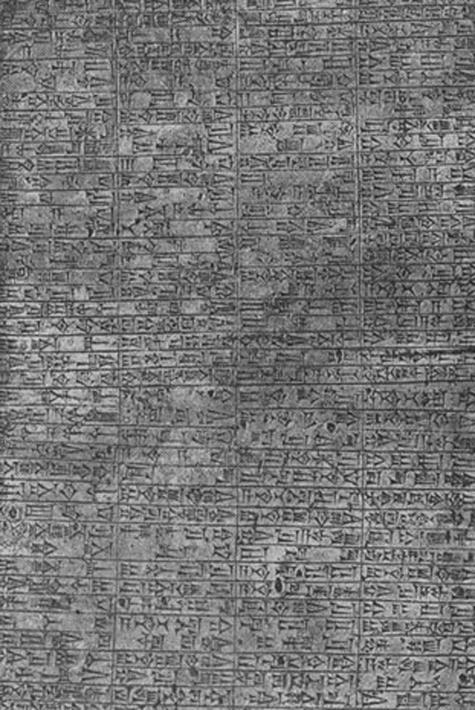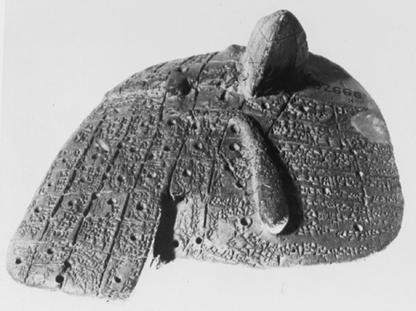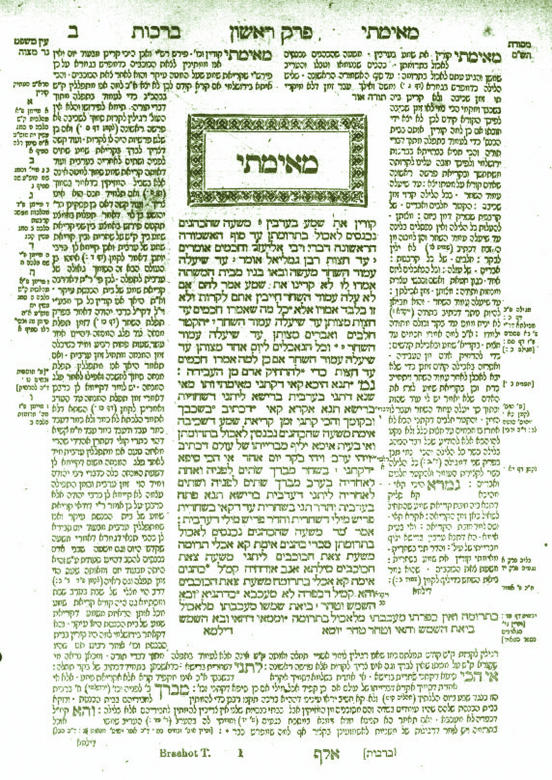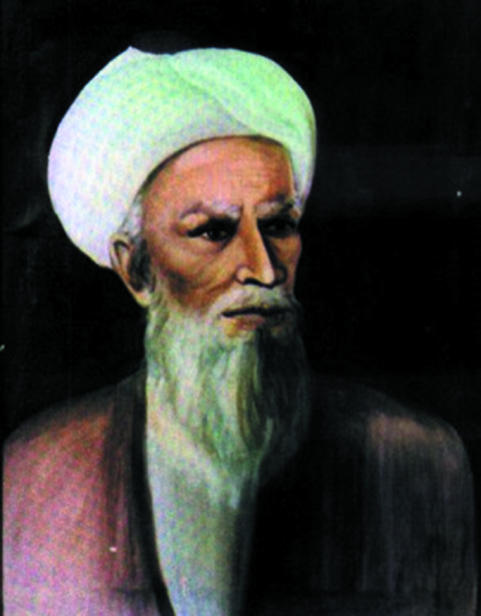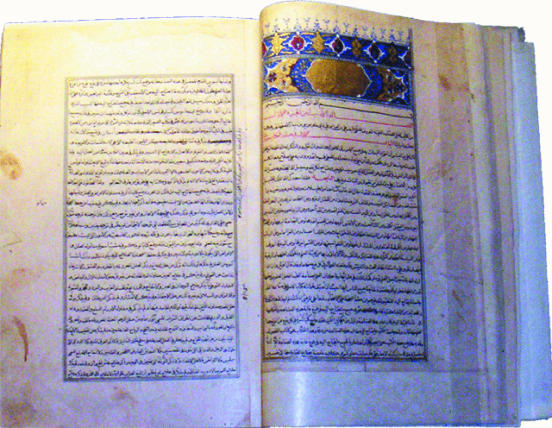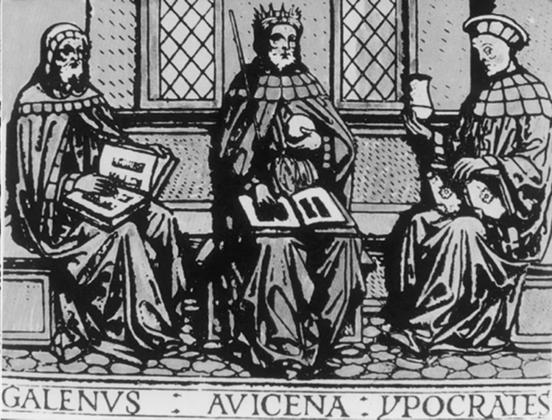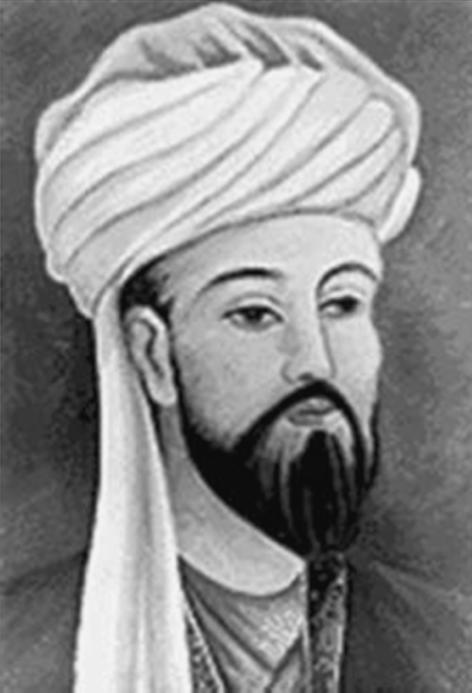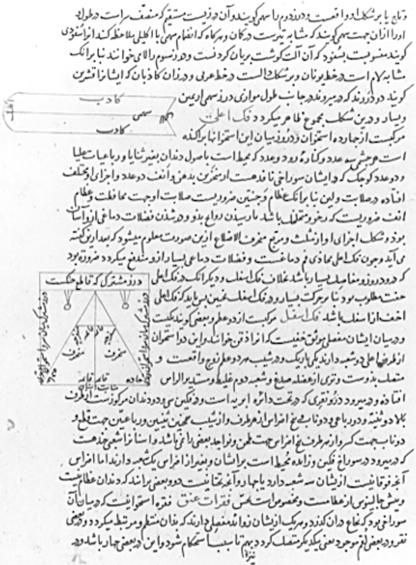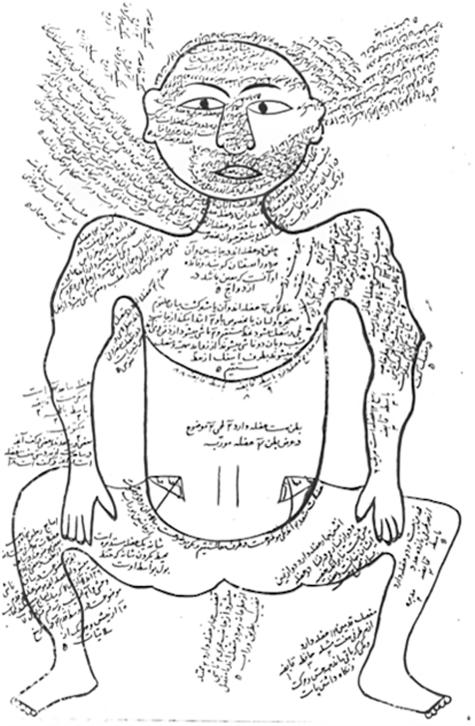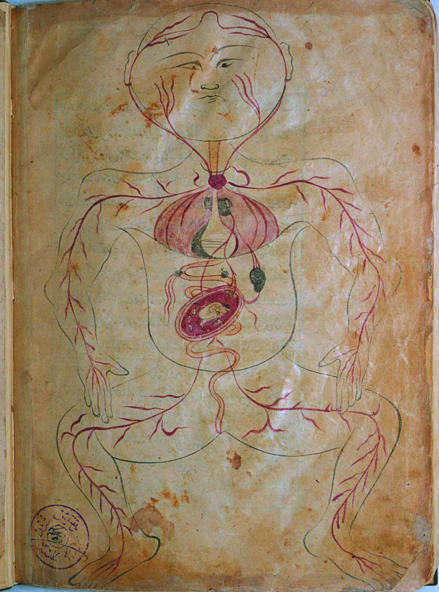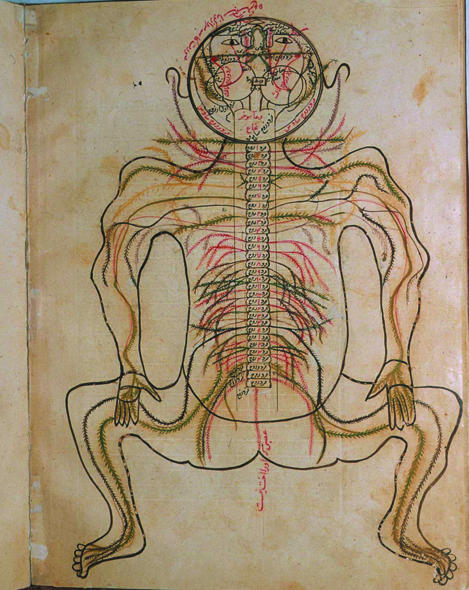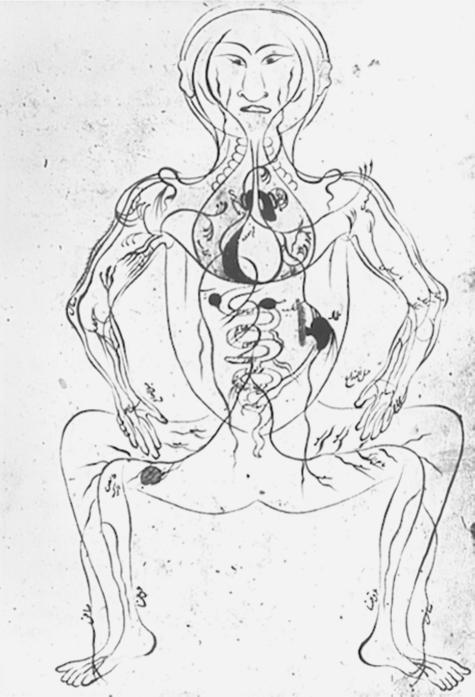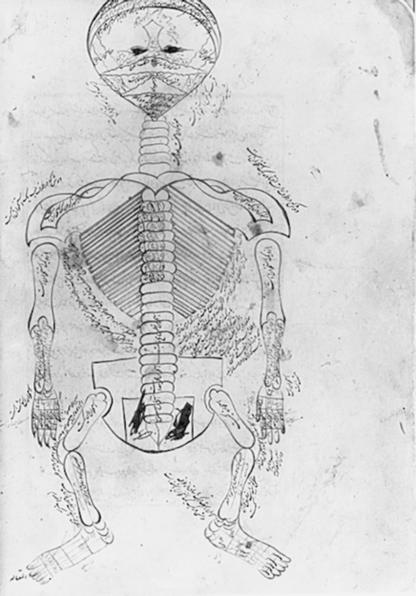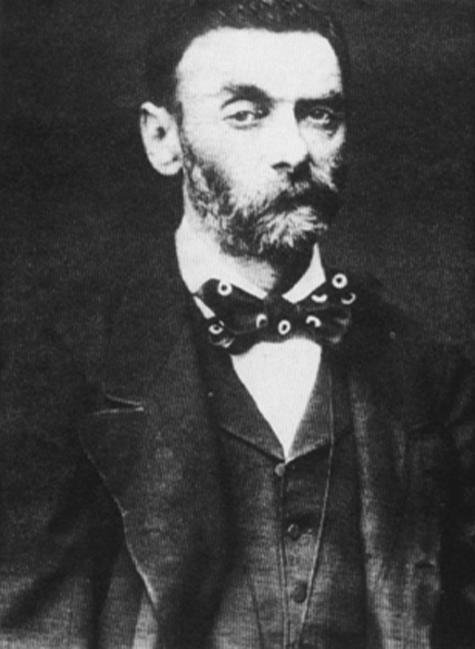Abstract
The study of human anatomy can be found throughout the rich history of Persia. For thousands of years, morphological descriptions derived from this part of the world have contributed to and have helped form our current anatomical knowledge base. In this article we review the major influential Persian periods and the individuals who have contributed to the development of anatomy. We have divided the history of Persia into five eras: (1) the period of the Elamites, Medes, early Persians and Babylonians (10th millennium to 6th century BC); (2) following the establishment of the Persian Empire (6th century BC) to the 7th century AD; (3) after the Islamic conquest of Persia to the ascendency of Baghdad (7th to 13th century AD); (4) from the Mongol invasion of Persia to the foundations of modern anatomy (13th to 18th century AD); and (5) modern Persia/Iran (18th century AD to present). Evidence indicates that human dissection was commonplace in the first era, which led to a disciplined practice of surgery in the centuries leading to the foundation of the Persian Empire. By the emergence of Zoroastrianism in the Persian Empire, the microcosm theory was widely used to understand internal anatomy in relation to the external universe. The world's first cosmopolitan university and hospital were built in Gondishapur, south-western Persia, in the third century AD. Greek and Syriac knowledge influenced the second era. With the gradual ruin of Gondishapur and the foundation of Baghdad following the Islamic conquest of Persia (637–651 AD), a great movement took place, which led to the flourishing of the so-called Middle Age or Islamic Golden Age. Of the influential anatomists of this period, Mesue (777–857 AD), Tabbari (838–870 AD), Rhazes (865–925 AD), Joveini (?−983 AD), Ali ibn Abbas (930–994 AD), Avicenna (980–1037 AD) and Jorjani (1042–1137 AD) all hailed from Persia. There is evidence in the Persian literature as to the direct involvement of these scholars in human dissection. Syro-Indian, Byzantine, Greek, Chinese and Arabic knowledge all influenced the third era. In the fourth period, the first colour illustrated anatomical text (by Mansur, 14th century AD) was compiled. Chinese and Indian anatomical styles were embraced, though there was a strong religious siege of anatomy late in this era. By the 19th century, Persia had entered a new era of modernizing movements and academic contact with the West through the reforms of Mirza Tagi Khan Amir Kabir. Knowledge of anatomy for this region in the 20th century was greatly influenced by Europe and America.
Keywords: Iran, medicine, Middle East, morphology
‘How mistaken are modern men in thinking that physicians before them knew nothing.’
Avicenna, 11th century AD
Introduction
Persia, officially renamed Iran in 1949 (a term meaning the Land of the Aryans), was founded by Cyrus II [Cyrus the Great, 599–530 BC] and his successors, the Achaemenids at the middle of the 6th century BC. The early Persians were one of several Aryan tribes that settled in the Iranian plateau in approximately 1700 BC. These people probably originated from the shores of the Caspian Sea (Durant, 1954). Later, Persian leaders allied with the Medes where Cyrus the Great made himself ruler of the so-called Medo-Persian Empire. Extending from Egypt to the Punjab and from the Dardanelles to Samarkand, this Empire was the largest the world had seen until the conquests of Alexander the Great.
The aim of the present review is to describe how scientists of this plateau, from ancient to modern times, contributed to the development and progress of the anatomical sciences. As the knowledge of anatomy is integral to medicine, the history of anatomy is closely integrated with the history of medicine for a given country. Hence, a concise history of Persian medicine is also provided when necessary. From a scientific viewpoint and to highlight the changing trends in the field of anatomy, we have divided the history of Persia into five eras: (1) the period of the Elamites, Medes, early Persians and Babylonians (10th millennium to 6th century BC); (2) following the establishment of the Persian Empire (6th century BC to 7th century AD); (3) after the Islamic conquest of Persia and the ascendancy of Baghdad (7th to 13th century AD); (4) the Mongol invasion of Persia and the fall of Baghdad (13th to 18th century AD); (5) modern Persia (since the 18th century AD).
1. The period of the Elamites, Medes, early Persians and Babylonians
The history of the settlement of the plateau of Iran prior to the migration of the Aryans is largely unknown. However, evidence indicates that this land was inhabited from as early as 20 millennia BC. The civilization of Susa is reported to be one of the oldest of these. Susa, the present-day Khuzestan in south-western Iran, was the capital of the ancient kingdom of Elam; it was ruled by the Davidians, who used a cuneiform writing system. The Elamite kingdom was destroyed by the Babylonians, from southern Mesopotamia.
The practice of surgery became widespread during this period in which the Code of Hammurabi (the sixth king of the first dynasty of Babylon, 1955–1912 BC) was established. According to this code, surgeons were subjected to serious penalties for making surgical errors (Goodrich, 2004). Such strict laws might have led to more realistic approaches to the practice of medicine and surgery in order to decrease potential iatrogenic errors with subsequent punishment of the practitioner (Fig. 1). Little is known about the practice of anatomy and dissection during this period, but a model of a sheep's liver with surface segmentations was used for divination and instruction during the 19th century BC (Persaud, 1984) (Fig. 2). However, it is not clear whether this model with cuneiform writing actually belonged to the Babylonians or had been acquired from the Elamites (Majidzadeh, 2001). The earliest use of animal models for the study of human disease is attributed to the Babylonian school of rabbis (Rust, 1982). Moreover, early information on anatomy, physiology and pathology using animal models is found in the Babylonian Talmud (Rust, 1982) (Fig. 3). In this text the number of human bones was counted as 248 and the muscles (flesh) were described. The psoas muscle was mentioned as having two parts whose respective fibres ran longitudinally and transversely. Rust (1982) has stated that ‘The medical knowledge of the Talmudist was based upon tradition, the dissection of human bodies, observation of disease and experiments upon animals’. Hence this demonstrates the first use of human dissection for medical education in Babylon. Persaud (1984) stated that notwithstanding their devotion to spiritual pursuits, the Aryans [Persians] developed a rational and secular approach to the practice of healing. This author further wrote that without the knowledge of anatomy, the diagnosis and treatment of diseases might have been inconceivable in this era.
Fig. 1.
Ancient Babylonian cuneiform script dealing with the Code of Hammurabi. As the first written code of laws, this Code covered extensive medico-legal issues.
Fig. 2.
Babylonian anatomical model of a sheep's liver from the 19th century BC.
Fig. 3.
The first page of the Babylonian Talmud (Talmud Bavli, Vilna Edition).
2. Following the establishment of the Persian Empire (sixth century BC to seventh century AD)
The Achaemenian [Achaemenid] Dynasty (558 or 559–330 BC)
Cyrus the Great (c. 558 or 559–530 BC) was the first Achaemenid emperor. Having united the Medes and Persians, he expanded his empire to the west, conquering Babylon in 539 BC. His rule was characterized by tolerance and respect, and the Achaemenian dynasty was the first major Persian dynasty to promote the development of science (Price, 2001). During this period, records indicate that bodies of condemned criminals were used for dissection and medical research (Elgood, 1952) (Table 1). According to the Avesta, the holy book of Zoroastrianism, every individual is a microcosm of the vast world with any of his or her constituents having a counterpart in the universe (macrocosm) (Zaehner, 2006). The so-called Bundahishn of the Avesta states ‘The skin is like the sky, the flesh is like the earth, the bones are like the mountains, the veins are like the rivers, the blood in the body is like the water in the sea, the hair is like the plants, the hairier parts are like the forests’. Elgood (1952) stated that through their development of the microcosm theory, Persians established the fundamentals of anatomy, physiology and pathology long before the Greeks.
Table 1.
Influential eras and authors of early Persian anatomy
| Period/Book | Author | Years | Comments |
|---|---|---|---|
| Achaemenian Dynasty | 648–330 BC | Dissection of condemned criminals | |
| Islamic Conquest | 637–651 AD | Dissection of animals and humans | |
| Kitab-al-Kankash le-Mashajer al-Kair | Mesue | 777–857 AD | Contributions to embryology and disorders of the eye |
| Firdous al-Hakmat | Al-Tabari | 807–870 AD | Contributions to embryology and anatomy of the brain, nerves, heart and liver |
| Kitab-al-Mansuri | Rhazes | 865–925 AD | Descriptions on the bones, muscles and heart. Significant contributions to neuroanatomy |
| Hidayat al-Mutaallimin fi al-Tibb | Joveini | ?−983 AD | Descriptions of the eye and nervous system including the blood vessels of the brain |
| Kamil al-Sana al-Tibbiya | Ali ibn Abbas | 930–994 AD | Descriptions of the uterus, heart and pulmonary vessels |
| Al-Qanun fi al-Tibb | Avicenna | 980–1037 AD | Descriptions of the aorta, heart, eye, vertebrae and brain |
| Zakhireyei Khwarazmshahi | Jorjani | 1042–1137 AD | Comprehensive descriptions of the optic nerve |
Sassanid (226–652 AD) and the Academy of Gondishapur
Shapur I, the son of Ardeshir I who established the Sassanid dynasty, founded the city of Gondishapur (a compound term coming from Gund-ez-i Shapur that translated means the Citadel of Shapur) in 271 AD after defeating Valerian, a Roman emperor. Soon becoming one of the major cities in Khuzestan province (currently south-western Iran), Shapur II made Gondishapur his capital. As a cosmopolitan city, this became the centre of medical sciences for several centuries and hosted the Academy of Gondishapur and the first teaching hospital in the history of medicine. Elgood (1952) stated that credit for our current hospital system must be given to Persia. The Academy of Gondishapur prospered under the Sassanid king Khosrow Anoshirvan the Wise who stated that ‘we have never rejected anyone for their religion or origin’. Greek scientists fleeing the persecution of Byzantine rulers were admitted by King Anoshirvan and commissioned to translate Greek and Syriac texts into Pahlavi (Price, 2001). By the order of this king, a scientific symposium was held in Gondishapur and all debates were recorded (Price, 2001). Medicine in Gondishapur was contributed to by Nestorian physicians (Hamaraneh, 1969; Farhadi et al. 1996). Gondishapur had separate schools for teaching the basic sciences (Miller, 2006). Little is known about the practice and knowledge of anatomy in pre-Islamic Gondishapur, probably due to the vast destruction of libraries and scientific concepts by early Muslim invaders (see below).
3. The Islamic Conquest of Persia (637–651 AD) and the ascendency of Baghdad (762–1259 AD): the Islamic Golden Age
The Islamic Conquest of Persia took place in the seventh century (Table 1). With the fall of the Sassanid dynasty, the Academy of Gondishapur persisted for several more centuries (Farhadi et al. 1996). Arabic became the universal language of the empire. The destruction of major libraries by Muslims created intense apprehension among Persian scholars as significant knowledge of the sciences was lost. For approximately two centuries, a major effort was made to retain the surviving non-Arabic literature by translating it into Arabic, which also indirectly served to preserve the continuity of Persian history (Price, 2001). Begun in the Umayyad period, such conversion flourished and was supported by the Abbasids (see below). Persians followed the Koran, the holy book of Islam. The Koran described human embryogenesis including the development of the organs of hearing, the eyes and the brain (Moore, 1986).
Opinions differ on the effects of Islam on the practice of anatomy. Savage-Smith (1995) stated that human anatomical dissection was disavowed by Muslim medical practitioners for general cultural and specific religious prohibitions. Wakim (1944) opined that while Islamic scholars did little dissection of the human body, they did dissect animals and separate organs of the human body, such as the eye. However, Abdel-Halim & Abdel-Maguid (2003) believed that the practice of dissection was not prohibited in either the religion of Islam or in the Islamic world. These authors wrote that the knowledge of anatomy was thought by Muslims to deepen the appreciation of God's wisdom and omniscience. Abul Waleed ibn Rushd (Averroes, 1126–1198 AD), a Muslim philosopher-physician, even stated that ‘anyone who undertakes dissection increases their faith in God’. Anatomy had been so intertwined with theology that Imam Fakhr al-Din al-Razi (1149–1209 AD), a well-known Persian theologian and philosopher, devoted a significant part of his theological treatise to the descriptions of the human body. Moreover, the lack of knowledge regarding the human body was a criterion for illiterateness of lay persons. Batirel (1999) postulated that in the Islamic era, anatomical knowledge progressed through animal dissections, evaluation of human corpses, observations of bones that were found accidentally, and during surgical intervention on patients. However, evidence exists of the direct involvement of these scholars in human dissection (Farhadi et al. 1996).
Abbasids (750–1256 AD)
Islamic civilization began its worldwide influence in the city of Baghdad, which was built by Calif (a successor of Muhammad) Al-Mansur in 762 AD and proclaimed capital of the Abbasid Caliphate, with legal authority over all Islamic territories (Nagamia, 2003). Calif Al-Mansur invited the head of the Gondishapur Academy, Jirjis Bukhtyishu (a Christian whose name means ‘Jesus saves’) to come to Baghdad and set up the first hospital in the city, based on the Syrio-Persian model at Gondishapur (Elgood, 1952; Nagamia, 2003). Although Bukhtyishu eventually returned to Gondishapur, his son Jibrail remained, becoming a prominent physician.
As a cosmopolitan city, Baghdad contained individuals from all races, religions and sects, including Persian, Indian, Byzantine and Chinese. During this period, much attention was directed to science and to the translation of Greek and non-Greek literature so that this information could become widespread throughout Islamic territories such as Persia. Persian (Farsi) translators, of whom Abu Reyhan Birooni (973–1048) was well known, created a vast collection of scientific treasures in Arabic. In 830 AD, the House of Wisdom (Bait-ul-Hikma) was founded by Calif Al-Mamun, an Abbasid Calif, for the translation of the scientific and philosophical books he imported for this purpose from the Byzantine emperor. Fifty-seven translators were employed to translate scientific scripts from many languages (Nagamia, 2003). The Abbasid strategy of encouraging translation led to the flourishing of the so-called Middle Age or Islamic Golden Age.
Abu Zakariya Yuhanna ibn Masawaih, Mesue (777–857 AD)
The great Ibn Masawaih, known in the West as Masuya, Mesue Major, Mesue Senior, Mesue the Elder or Jean Mesue, was Persian. This Christian physician was the son of a pharmacist from the Academy of Gondishapur. Mesue left Gondishapur for Baghdad to study under Jibrail ibn Bakhtyashu. He soon became a knowledgeable physician and anatomist and was appointed director of a hospital in Baghdad. Mesue dissected apes for his anatomical studies and teaching because of their similarity to humans. Reportedly, he had been supported by Calif al-Mutasim, the eighth Abbasid caliph (Elgood, 1952). Mesue is reported to have had a dull son whom he wished to autopsy to discover the cause of his retardation, so that physicians could find a treatment for similar patients (Farhadi et al. 1996). Mesue was one of the early directors of The House of Wisdom. Several anatomical and medical treatises are attributed to him, the most important of which are the Kitab al-Kankash le-Mashajer al-Kabir (Textbook of Medical Consultation) (Table 1) composed of 80 sections, and Daghal al-Ain (Disorders of the Eye), both written in Arabic. In sections 23–26 of the Kitab al-Kankash, Mesue eloquently described facial nerve paralysis and differentiated between its treatable and untreatable forms (Farhadi et al. 1996). He wrote extensively on embryology (Weisser, 1980) and the first treatise on diet, Kitab al-Hawass al-agdiyah (Troupeau, 1995). His student Hunayn Ibn Ishaq (Yohanitus or Johannitus, 809–873 AD) continued his ophthalmologic studies in Rome, Alexandria and Persia and wrote the book Al-Ashr Maqalat fi al-Ayn (Ten Treatises on the Eye) (Bodjnordi, 1996a, 1996c). The first detailed anatomical illustration of the eye appeared in this book. Hunayn also translated the anatomical writings of Galen. Wakim (1944) stated that Johannitus and his predecessor Mesue were representative of a transition period in Arabic medicine when physicians no longer limited themselves to translations but also began to develop original medical studies and practices.
Ali ibn Sahl Rabban al-Tabari (807–870 AD)
Tabbari, another major physician of the 9th century AD, wrote Firdous al-Hikmat (Paradise of Wisdom), which contained extensive information from Greek, Syrian, Persian and Indian sources and contained extensive anatomical information (Price, 2001). Al-Tabari (Table 1) was from a prominent Jewish family in Merv of Tabaristan (of old Persia) (Hamarneh, 1970). Merv, for its contiguity with India, was a strategic city in Old Persia and served as a critical passage between these two countries (Nadjmabadi, 1987). Tabbari's father was a clergyman in the court of the king of Tabaristan. Following the anarchy of Merv and murder of its king, Tabbari went to Ray and then to Samarrah (in present-day Iraq). The Paradise of Wisdom was written in Arabic in seven sections and was translated into Syriac. The second section of this book dealt mostly with embryology, explanations of the brain, nerves, heart, vessels, liver and stomach, and the mechanisms of voluntary and involuntary movements (Nadjmabadi, 1987).
Abubakr Muhammad Ibn Zakaria Razi, Rhazes (865–925 AD)
Rhazes, also known as Ibn Zakariya, ar-Razi, or Razi (Fig. 4), was born in Ray, a city a few miles south of modern Tehran, in 865 AD. He studied under a pupil of al-Tabari. He proudly stated: ‘I never wrote about things unless I first examined them myself’ (Farhadi et al. 1996). Two major contributions of Rhazes to medicine were the Kitab al-Mansuri (Liber Al Mansuri), which was dedicated to the Samanid ruler of Ray and the Kitab al-Hawi (Liber Continens, meaning comprehensive book or encyclopaedia) (Naji, 1999) (Table 1). His smaller work was a treatise on smallpox and measles that was considered a masterpiece of medicine for centuries. The anatomy section of Liber Al Mansuri was organized into different chapters for (1) the simple organs – bones, nerves, muscles, veins and arteries, and (2) compound organs – eyes, nose, heart and intestines. This format was later used by Joveini and Jorjani (see below). Rhazes was the first to utilize neuroanatomy in the localization of lesions of the nervous system and to correlate them with clinical signs. He described nerves as having motor and sensory functions while enumerating seven cranial nerves from the optic to the hypoglossal nerves and 31 spinal nerves (Souayah & Greenstein, 2005). Some anatomical descriptions of Rhazes were original and had not been reported before him. For example, he excluded Galen's assumption of the existence of a bone at the base of the heart (Newman, 1998) and was the first to describe the recurrent laryngeal nerve as a mixed sensory and motor nerve (Farhadi et al. 1994).
Fig. 4.
Painting of Rhazes (Abubakr Muhammad Ibn Zakaria Razi, Rhazes, 865–925 AD).
A pioneer of applied neuroanatomy, Rhazes used the differential diagnosis approach for the evaluation of his patients, an approach that continues to be used in modern medicine (Tan, 2002; Souayah & Greenstein, 2005). He noted that different diseases might have similar signs and symptoms. He used music for promoting healing (music therapy) and was one of the first to appreciate the influence of diet on the function of the body and predisposition to disease (Tan, 2002). He described tracheostomy and facial plastic surgery in his Liber Continens (Farhadi et al. 1996). He was an alchemist, mathematician, philosopher and astronomer as well as physician and anatomist (Wakim, 1944). August 27th, the birth date of Rhazes, is now proclaimed as the day of the Pharmacist in Iran.
Rhazes rejected several claims made by Greek physicians regarding the alleged superiority of Greek language and medicine. Although an avid follower of Galenic thought, Rhazes rejected many teachings of Galen. For example, Rhazes disagreed that the brain, spinal cord and cerebral ventricles were formed in pairs. He also disagreed with Galen, who did not relate hemiplegia to hemispheric dysfunction but rather to a cerebral ventricular origin. Rhazes praised Galen for his anatomical contributions (Farhadi, 1996). Interestingly, when Rhazes tested his students, he began with questions on anatomy. If the students failed to respond correctly, they were dismissed even if they had already passed their clinical examinations as he felt failure in this subject made them unworthy to practise as a physician (Abd Al Kader M. Ali and Abdel-reheem Ead http://www.levity.com/alchemy/islam06.html).
Abubakr Rabi ibn Ahmad Joveini Bukhari (?−983)
Joveini (or Akhawaini), also known as Abu Hakim, was from Bukhara of Old Persia; he studied under a pupil of Rhazes. He wrote a comprehensive medical book, Hidayat al-Mutaallimin fi al-Tibb (Guideline for Scholars in Medicine, ∼975 AD) in Persian, and this became the first book on medicine in Farsi (Table 1) (Elgood, 1952; Matini, 1965; Bodjnordi, 1996b). Joveini primarily used Persian anatomical terms and infrequently Arab translations. Newman (1998) wrote that with the Hidayat, the Persian language proved itself capable of incorporating or otherwise providing appropriate anatomical concepts and terms. Extraordinary discussions on the eye and nervous system, a symptom-based approach and its clear style made this book a masterpiece of anatomy and medicine for its time. However, this book obtained little attention from Arab governors. Joveini wrote in the Hidayat: ‘where these branches [internal carotid arteries] reach the brain, a strange structure is formed, a rete [arteriosus], which supplies the whole brain’. Such description of the arterial circle of Willis could not be found in previous Greek literature. Joveini also mentioned the cardiac innervation by the same cranial nerve that provides the recurrent laryngeal nerve and also supplies the alimentary tract (Matini, 1965). Some have postulated that Joveini had himself practised dissection of the human body (Farhadi et al. 1994). Although some similarities are found between the Liber Al Mansuri of Rhazes and the Hidayat of Joveini, the latter includes more details on the anatomy of the organs and their functions (Newman, 1998). Dr Jalal Matini, a modern Iranian writer wrote a literary edition of the Hidayat in 1965, for which he won the annual Iranian Royal Award (Nadjmabadi, 1987).
Ali ibn Abbas al-Majusi, Hally Abbas (930–994 AD)
Ali ibn Abbas al-Majusi, that is, the Magian (which means that he, or his father was of the Zoroastrian faith) was born in Ahwaz, south-western Persia; he flourished under the patronage of Buwayhid Amir Adud al-Dawla, a ruler of Persia and Iraq who died in 983 AD (Nabipour, 2003; Belen & Aciduman, 2006). Ali ibn Abbas is now regarded as one of the greatest physicians of the Eastern Caliphate (Nabipour, 2003; Belen & Aciduman, 2006). He dedicated, to the Adud al-Dawla, a medical encyclopaedia (Fig. 5) called ‘the Royal Book’ (Kitab al-Maliki, Liber Regius, Regalis Dispositio, Liber Totius Medicinae, also called Kamil al-Sana al-Tibbiya) in ∼965 AD, which is more systematic and concise than Razi's Hawi, but more practical than the Canon of Avicenna, by which it was superseded (Elgood, 1952) (Table 1). Written in Arabic, the Maliki is divided into 20 discourses. This book was translated by Constantine the African and Stephen of Antioch (Nadjmabadi, 1987) and was used as a textbook of surgery in schools across Europe (Wakim, 1944). In it, Ali ibn Abbas described the concept of a capillary system and uterine contractions during birth (Wakim, 1944). The anatomical descriptions of the Liber Regius were separately translated by Christians and were the main source of such knowledge for centuries even at Salerno (Nabipour, 2003). In 1921, Castiglioni (cited in Nadjmabadi, 1987) stated that the Maliki represented the first attempt for the renewal of the art of medicine in the Middle Ages. Ali ibn Abbas introduced several novel surgical techniques including those for the removal of spinal tumours and goitres (Nabipour, 2003; Belen & Aciduman, 2006). He was one of the first to disprove that a passage existed between the right and left ventricles of the heart, which had been erroneously stated by Galen and Avicenna (see below) (Batirel, 1999). This notion facilitated the emergence for the concept of the pulmonary circulation in the 13th century AD (Meyerhof, 1935; Batirel, 1999). Ali ibn Abbas wrote that the pulmonary arteries are composed of two layers: an inner layer of oblique fibres and an outer layer of longitudinal fibres, which allow the relaxation and contraction of these vessels (Batirel, 1999).
Fig. 5.
Page from the Kitab al-Maliki by Ali ibn Abbas c. 965 AD (with permission of the Beinecke Rare Book and Manuscript Library, Yale University, USA).
Abu Ali al-Hussain ibn Abdallah ibn Sina, Avicenna (980–1037 AD)
Ibn Sina, also known as Hakim Bu Ali, Abu Ali, Pur Sina, Ibn Sina, Bin Sina, Sheikh or-Raeis and Sheikh Ali in the Arab world and as the Latinized ‘Avicenna’ in the West, was born in 980 AD and was a towering figure as a physician, philosopher, encyclopaedist, mathematician, astronomer, politician, governor and administrator (Fig. 6) (Naficy, 2005). His contributions to anatomy as a physician, teacher and researcher represent the most important advances in the subject between those of Claudius Galen (120–200) and Andreas Vesalius (1514–1564 AD). Although it is controversial whether or not Avicenna directly undertook human dissection, most of his descriptions of the structures of the body were novel for his time. Some authorities believe that Avicenna performed human dissection in secret (Farhadi et al. 1996). As the writer of the Al-Qanun fi al-Tibb (The Canon of Medicine, ∼1020 AD), he introduced anatomy in a systems-based approach at the beginning of each chapter followed by a discussion on the diseases of that system (Naderi et al. 2003) (Table 1). This approach, pioneered by Avicenna, was the template for modern clinically orientated anatomy. He stated that ‘pupils should learn the general principles of medicine, analyze the diseases that affect different organs and to do so, must first study the anatomy of these organs’ (Naderi et al. 2003).
Fig. 6.
Drawings of Galen (left), Avicenna (Abu Ali al-Hussain ibn Abdallah ibn Sina, 980–1073 AD) (middle) and Hippocrates (right).
Avicenna was born in the village of Afshaneh near Bukhara of Old Persia (modern day Uzbekistan). His family moved to Bukhara when he was 5 years old. Although his native language was Persian (Farsi), he educated himself in Arabic, which was the formal language of Islamic territories at that time (Shoja & Tubbs, 2007). Avicenna became versed in Islamic laws and various sciences by the age of 10. He continued to study philosophy and medicine and, at the age of 17, cured Nooh Ibn Mansoor, the King of Bukhhara, of an unknown illness that other physicians had failed to cure. After serving as a librarian and then a court physician, Bu Ali left Bukhara for Jurjan and then Ray, Hamadan and Isfehan where he wrote his masterpiece book of medicine, the Canon of Medicine, in ∼1020 AD (Naficy, 2005; Shoja & Tubbs, 2007). This text was divided into five parts of which the first one described the anatomy of simple organs. The Canon of Medicine was translated into Latin by Gerard of Cremona in the 12th century (Naderi et al. 2003) and into Hebrew in 1279. It was the main medical text in Western medical schools until as late as 1650 (Noury, 2006; Shoja & Tubbs, 2007).
Avicenna always recommended that physicians and surgeons base their knowledge on a close observation of the human body. He observed that the aorta at its origin contained three valves, which open when blood rushes out of the heart during contraction and close during the relaxation of the heart thus keeping blood from returning to the ventricle. This observation pre-dated William Harvey's demonstration of the circulation of the blood by six centuries. He asserted that muscular movements are possibly due to the nerves that supply them and that the perception of pain from muscles may also be due to these nerves. Furthermore, he observed that the liver, spleen and kidney did not contain any nerves but nerves did cover these organs. The precise descriptions of six extra-ocular muscles and the trigeminal nerve are also found in the Canon. Avicenna distinguished nerves and tendons as different anatomical structures, in contrast to previous interpretations (Al-Qattan, 2006). His study of the eye produced major advances regarding the anatomy and care of this organ (Price, 2001). He was also the first physician to popularize the practice of tendon repair (Al-Qattan, 2006). He stated that if an excretory duct of the body became occluded, an adjacent gland subsequently swelled (Farhadi et al. 1996). He described in detail the vertebrae and its parts (Naderi et al. 2003). He also provided correct anatomical commentary on the cerebellum and caudate nucleus (Goodrich, 1997).
Avicenna died in 1037 at the age of 58 and was buried in Hamadan, where one may still see his grave today. August 23rd, the birth date of Avicenna, is celebrated each year as the day of the Physician in Iran. Interestingly, a crater on the moon is named in his honour (Noury, 2006).
Zinn-ol-Abedin Seyed Esmail ibn al-Hussain ibn Mohammad ibn Ahmad al-Jorjani, Hakim Jorjani (1042–1137 AD)
Esmail Jorjani was born in Jorjan, north-eastern Persia, in 1042 AD. He was a physician who served in the court of Khwarazm Shah Qutb al-Din Muhammad ibn Nushtikin, the Governor of the Persian province of Khwarazm and his successor, Atsoz. He flourished under Abd al-Rahman ibn Ali ibn Abi Sadegh, a former pupil of Avicenna and an influential physician of the Khwarazmi Dynasty (1077–1231 AD) in Nishapur (Elgood, 1952; Moharreri, 2005). Then, Jorjani went to Khwarazm city to continue his career as a court physician. His comprehensive textbook of medicine, Zakhireyei Khwarazmshahi (The Treasure of Khwarazm Shah, ∼1112 AD), is considered the oldest medical encyclopaedia written in Persian; it was later translated into Hebrew and Turkish (Elgood, 1952; Moharreri, 2005) (Table 1). The Treasure is composed of ten books of which the first one contains extensive anatomical descriptions including almost all the knowledge of human body structures of its time (Nabipour, 2003; Moharreri, 2005). Jorjani criticized certain details offered by Galen and Avicenna (Newman, 1998). On the anatomy of the optic nerve, Jorjani, unlike Avicenna, agreed with Galen that this nerve at its periphery goes to the ipsilateral rather than the contralateral eye. In the fifth book, Jorjani elegantly described three body fluid compartments: intravascular, interstitial and a third compartment within the material of the tissues (intracorporeal). He was also the first to mention the association between a goitre and exophthalmia. Al-Aghraz-o-Tebbieh and Khofieh Alaii are two synopses of this medical encyclopaedia created by Jorjani himself for use as a manual or handbook by medical students (Moharreri, 2005). Zobdat al-Tibb (Master of Medicine) written by Jorjani (date uncertain) was also a treatise on anatomy and medicine. Jorjani later moved to Merv, the capital of Seljug Sultan Sanjar ibn Malikshah, where he died.
4. From the Mongol invasion of Persia to the foundations of modern anatomy
In the centuries following the Mongolian conquest (∼1220 AD), the conquest of Baghdad (1258 AD) and the end of the Abbasid Caliphate, three power centres emerged in the Middle East: Persia, Turkey and Egypt. Persia was ruled by a line of Mongols called Ilkhans (Lewis, 2004). The Ilkhanid dynasty was based in three capitals: Tabriz and Maragha (both in Azerbaijan, presently north-western Iran) and Baghdad. The Ilkhanids brought about a new political and social tolerance that allowed the arts and sciences to flourish and led to the assertion of prophetic medicine. Elgood (1952) postulated that this change facilitated the emergence of the first colour illustrated anatomy text in Persia, which previously, because of religious restrictions, would have had no opportunity for dissemination. Furthermore, Persia–China trade and scientific exchanges, which were via the Silk Road and of more than a millennium duration, increased in this era (Farhadi et al. 1996). Unfortunately, astrology and magic became sources for the interpretation of some anatomical studies (Newman, 1998). Chinese anatomical ideas became available through such works as the Tansuq-nama-yi Ilkhani dar Funun-i Ulum-i Hata (1314 AD) under the auspices of Rashid al-Din Fazlallah Hamadani. Medical writings were often as much theological and political as scientific (Newman, 1998).
Nasir al-Din Tusi (1201–1274), human variation and human evolution
Jafar Mohammad ibn Mohammad ibn al-Hasan al-Tusi, also known as Muhaqqiq-i Tusi, Khwaja-i Tusi and Khwaja Nasir (Fig. 7), stated hundreds of years before Darwin that ‘organisms that can gain new features faster are more variable. As a result, they gain advantages over other creatures’. Being a great theorist of his time, Tusi developed primary ideas regarding human evolution, hereditary variability and the conservation of mass. He believed that humans were derived from advanced animals. Tusi was born in Tous of Khurasan province, currently north-eastern Iran, from a family of Shiite jurists. He initially studied religious law and while under the influence of his uncle went to a nearby city, Nishapur, to learn logic, physics, mathematics and metaphysics. His youth was concurrent with the Mongol invasion of the Islamic area (∼1220 AD), which is now regarded as one of the most devastating events in the history of Persia. Under the rule of Genghis Khan, the leader of the invading Mongols, thousands of innocent people were killed and libraries burned (Wakim, 1944). Later, in the middle of the 13th century, Tusi advised Hulegu Khan, the grandson of Genghis Khan. Hulegu was deeply impressed by Tusi's knowledge and appointed him as a minister. At least 64 treatises have been recorded for Tusi including those on astronomy, algebra, arithmetic, trigonometry, medicine, metaphysics, logic, ethics and theology. Tusi died in Kazemain (near Baghdad) in 1274 AD.
Fig. 7.
Drawing of Nasir al-Din Tusi (1201–1274).
Mansur ibn Muhammad ibn Ahmad ibn Yusuf ibn Ilyas, Ibn Ilyas (c. 1380–1422 AD)
The colour illustrated anatomy text of Mansur, Tashrih-i Mansuri (Mansur's Anatomy), also known as the Tashrih-i Badan-i Insan (human anatomy) was compiled in the 14th century AD (Figs 8–12). This Persian book was dedicated to Pir Muhammad ibn Umar ibn Timur, the ruler of the Persian province of Fars who was the grandson of Timur (Tamerlane) (Elgood, 1952; Savage-Smith, 2005). It consists of seven sections: an introduction, five main chapters and an appendix on the formation of the fetus and organs. Mansur used both Arabic and informal Persian terms. Five main chapters of this book systematically reviewed human bones, nerves, muscles, veins and arteries and each contained a diagram (http://www.nlm.nih.gov/exhibition/islamicmedical/islamic_10.html). Controversy exists regarding the origin of these illustrations. Some copies of Mansur's Anatomy include one or two additional illustrations: one showing a pregnant woman with the fetus lying in a breech position within the uterus (Fig. 13) and the other illustrating a naked female body (Elgood, 1952). Some authorities believe that these later illustrations may indeed be Persian [belonging to Mansur] as the body is of a rather oblique orientation not seen in previous Greek and Roman works (Elgood, 1952). Moreover, earlier Latin illustrations did not include figures of pregnant women (Newman, 1998). Mansur organized the chapters on organs in a hierarchical order according to their perceived vital role, with the cardiovascular and reproductive systems as the first and last chapters, respectively.
Fig. 8.
Excerpt from Mansur's text (Tashrih-i Badan-i Insan) describing the sutures of the skull and the bones of the maxillae. From Choulant (1852).
Fig. 12.
Drawing of the named skeletal muscles from Mansur's text. From Choulant (1852).
Fig. 13.
Drawing of a pregnant female from Mansur's text. From Choulant (1852).
Fig. 9.
Drawing of the nervous system from Mansur's text. From Choulant (1852).
Fig. 10.
Drawing of the venous system from Mansur's text. From Choulant (1852).
Fig. 11.
Drawing of the skeletal system from Mansur's text. From Choulant (1852).
A unique feature of Mansur's Anatomy that is rarely found in earlier Persian and Islamic medical writings is its detailed chapters on human embryology. He believed that the shortest gestational age a fetus may be able to survive is 6 months. He rejected the Hippocratic assertion that the brain is the first part of the body formed in the fetus (Newman, 1998). He agreed with Avicenna that the most important organ of the body was the heart and that this was the source of natural heat and life forces. Occasionally, this book used poetic descriptions of body structures.
Some authorities believe that Mansur's Anatomy was a transformation of Galenic dissection to a prophetic tradition so as to influence the attitudes of the general public through extensive references to the Koran and Islamic leaders (Farhadi et al. 1996). Newman (1998) opined that the importance given to the prophetic tradition in Mansur's Anatomy is partly explained as an effort to demonstrate the strengths of Islam, and thereby to influence the governors to religious tolerance. Newman (1998) hence divided the anatomy of Persia into two eras, before and after Mansur, corresponding to the tradition of Galenic dissection and prophetic knowledge. Mansur's Anatomy was popular in Persia for at least two centuries and was quoted in the Persian anatomical treatises of Abi al-Majd al-Tabib al-Bayzavi (see Table 2) and Abd al-Razzaq (Khulasat al-Tashrih) (Arjah et al. 1992; Newman, 1998).
Table 2.
Several anatomical manuscripts from Persia dated between the13th and 19th centuries
| Book | Author | Year/century (AD) | Comments |
|---|---|---|---|
| Tashrih: Mokhtasari dar lmI (Anatomy: A Synopsis of Science) | Abi al-Majd al-Tabib al-Bayzawi | 13th century | a Persian anatomical book in two sections on simple and compound organs |
| Ganooncheh (Handbook of the Canon) | Mahmud ibn Mahammad ibn Omar Chaghamini | 14th century | a handbook of medicine. The second chapter on anatomy was acquired from Joveini, Avicenna, and Jorjani. The author was from Khwarazm. |
| Arjozat fi Tashrih-i Badan (A Treatise on Human Anatomy) | Rashed ibn Amireh Sani | ∼15th century | a summary of human anatomy |
| Tashrih al-Sadr (Anatomy of the Thorax) | Unknown | 1632 | in Arabic and includes Hellenic and Islamic interpretations |
| Tohfat al-Mumenin (Gift of Mumen) | Mohammad Mumen Hussaini (Hakim Mumen) | 1656 | mostly on medicine and pharmacology and includes two illustrations for the body vasculature and bloodletting |
| Tashrih al-Maa (Anatomy of the Gut) | Unknown | 1684 | in Persian and about the anatomy and diseases of the alimentary tract |
| Tadbir al-Abdan (Body Science) | Abdolmonaam ibn Abdollah al-Aziz al-Ameli al-Maftuni | 1685 | on medicine, with a brief anatomical review. The original text is attributed to Imam Reza, a Shiite Imam in Mashhad |
| Atabakyeh | Unknown | 1779 | written in three chapters on ophthalmology The first chapter includes the anatomy of the eye |
| Mersad al-Tashrih (Research in Anatomy) | Timur ibn Muhammad Vali Mirza | 1840 | in Persian and dedicated to Mohammad Shah Qajar and deals with the anatomy of body articulations and simple organs |
| Merat al-Akvan | Timur Mirza | 1840 | in Persian and dedicated to Hadji Mirza Agasi and contains a traditional discussion on human embryogenesis |
| Moludiyeh | Ali Mohammad Tabib Isfahani | 1888 | on the anatomy of the genital organs, embryology and obstetrics. Includes Persian equivalents of western terminology |
| Tashrih (Anatomy) | Ali ibn Abd al-Jalil | 1879 | Translation of a French book, includes musculoskeletal structures and embryology. The author is a graduate of Dar al-Funun |
Mansur came from a family of scholars and physicians active for several generations in the city of Shiraz, in the central province of Persia (Fars) (Savage-Smith, 2005). Before writing his anatomy text, Mansur wrote a general medical compendium, Kifaya-yi Mujahidiya or Kifaya-yi Mansuri, which contained a short anatomical section based on Galenic dissection and was dedicated to Sultan Mujahid al-Din Zyn al-Abedin, the last Muzaffarid ruler of Fars before the conquest of the Timurids (Newman, 1998). Mansur gained his experience in Tabriz but also travelled to many different Eastern countries (Blair, 1997).
The Safavid period (1501–1722 AD) and the reconciliation of prophetic and Galenic traditions
One and a half centuries after the Ilkhanids, the Safavid dynasty began its influence with the capture of Tabriz from the ruling Sunni Turkmen alliance known as the Ak Koyunlu (the White Sheep Emirate) (Elgood, 1952). As the heir of Sufism, Safavids imposed Shia as the state religion. Sadly, this period was a time of gradual scientific withdrawal. As an example of the stagnation of Safavid Medicine, Elgood (1970) wrote ‘this period was characterized by writings with no new ideas and in which no ancient theory was contested’. Two books of note are Kholasat al-Tajareb (The Quintessence of Experience) by Mohammad Baha al-Dawla (?−1501) and Bihar al-Anvar (Oceans of Light) by Mohammad Baqir al-Majlisi (1626–1698), representing early and late medical theory and practice during the Safavid period (Elgood, 1952; Newman, 2003). Comparisons between these two highlight the scientific trends of this era. While the former primarily dealt with the author's own experiences and contains novel descriptions of such diseases as whooping cough, febrile skin eruptions and syphilis (Elgood, 1952), the latter focused on achieving a reconciliation between the Shia variant of prophetic medicine approved by the Imams and Galenic tradition (Newman, 2003).
Islamic jurists, prophetic medicine and the Galenic tradition
Mohammad Baqir al-Majlisi (1628–1698) (Baqir) was born in Isfahan into a Shiite family. His influence over Shah Sultan Husayn was substantial, as demonstrated by his appointment as Mulla Bashi (Senior Clergyman). Reportedly, Baqir attempted to eradicate Sufism and Sunni Islam as well as to persecute Zoroastrians, Jews and Christians. In the West, he was known as one of the most powerful and fanatical mujtahids (Islamic leaders) (Newman, 2003). He compiled the first encyclopaedia of Shiite jurisprudence, the Bihar al-Anwar (Oceans of Light). Chapter 48 of this text, which is entitled ‘on what al-Hukama (philosophers) and al-Atibba (physicians) say on the anatomy of the body and its parts’, is arranged in seven sections of simple and compound organs followed by the organs of hearing, the neck and spinal cord, thoracoabdominal system, reproductive organs and the number of bones (Newman, 2003). Interestingly, tendons, ligaments, membranes and cartilage have been added to that of Mansur's Anatomy as additional simple organs. The Bihar's anatomical descriptions are in agreement with those of Hellenic, Greek and the earlier Sunni Islamic texts of Avicenna and Mansur on different body structures (Newman, 2003). Baqir al-Majlisi, though known in the west as a Shia extremist, never stressed a single anatomical tradition but rather applied a liberal approach, which according to Newman (2003) highlighted the points of compatibility between the prophetic and Galenic traditions and provided the basis for an anti-radical discourse. Al-Majlisi stated that the most important organs of the body are the brain, the heart, the liver and the organs of procreation (or reproduction). He wrote that the heart contains innate heat and is the absolute master of the organs.
Jurists of earlier Islamic times did not directly address the issue of human dissection. Perhaps the first jurist who wrote specifically about dissection and its permissibility was Allamah Ahmad ibn Abd al-Munim al-Damanhuri, a highly educated man who died in 1778 AD. He wrote profusely on jurisprudence, medicine, astronomy and surveying. His treatise on anatomy, al-Qawl al-Sareeh fi Ilm al-Tashrih (The Explicit Word on Dissection), which he later expanded into a book entitled Muntaha al-Tashrih bi-Khulasat al-Qawl al-Sareeh fi Ilm al-Tashih (The Pinnacle of Dissection with the Quintessence of the Explicit Word on Dissection), provided the basis for the future of modern medical schools and dissection classes in many Islamic countries. The term Al-Musharrihon (meaning dissectors in Arabic) has been frequently used in the Persian–Arabic medical literature (Abdel-Halim & Abdel-Maguid, 2003).
In addition to the texts by known authors, several anonymous Persian anatomical treatises and drawings are known from various periods. A set of six anonymous figures dated to the late 18th century has been provided at the end of a book, Tibb al-Akbar (Akbar's Medicine), written by Mohammad Akbar Arzani ibn Mir Mohammad Mogim (or Akbar Shah) (http://www.nlm.nih.gov/exhibition/historicalanatomies/home.html; Arjah et al. 1992). This book was an amplified translation of an Arabic work by a Persian scholar, Nafis ibn Ivad Kirmani (Newman, 1998). At least 40 anatomical manuscripts dated between the 13th and mid-19th centuries and written by Persian scholars are available in the national libraries of Iran (Arjah et al. 1992). Table 2 lists some of these manuscripts.
5. Modern Persia/Iran, and academic contact with the West
Prince Abbas Mirza (1789–1833), the Qajar crown prince of Persia, a younger son of Fath Ali Shah, was an intelligent ruler. Although he ceded some Persian territories by a disadvantageous contract following an enforced war with Russia, he was loved by the people for his relative simplicity of life (http://en.wikipedia.org/wiki/Abbas_Mirza). Prince Abbas Mirza was the first Persian ruler to send scholars abroad to study modern science and return to Persia to practise (Mahdavi, 2005). In 1811, the first of these students, Hadji Baba (also known as Hadji Mirza Afshar, Hakim-Bashi), was granted permission to study anatomy and surgery in Britain (Wright, 1985). Hadji Baba wrote, in Arabic, Kitab al-Tashrih (Textbook of Anatomy) (Arjah et al. 1992).
Modern Persia and the foundation of the Dar al-Funun (Institute of Techniques)
An attempt to modernize Persia was made by the reformist Mirza Tagi Khan Amir Kabir, the Prime Minister of Naser-ad-Din Shah Qajar, the fourth king of the Qajar Dynasty. Amir Kabir founded the Dar al-Funun (Institute of Techniques) in 1851, which was designed by a British educated man, Mirza Reza Mohandes. John Dawud Khan, the envoy to Amir Kabir, was sent to Vienna to interview expert professors for the newly established Institute. Seven Austrian teachers were employed, including Dr Jacob Eduard Polak (see below) who is now regarded as a pioneer of modern clinical medicine and medical education in Persia (Azizi, 2005). The Dar al-Funun served as a polytechnic school and trained upper class Persian youth in medicine, engineering, military sciences and geology. By 1891, the faculty had expanded to include 16 Persian and 26 European instructors.
Jacob Eduard Polak (1818–1891)
Jacob Polak (Fig. 14) was a Jewish physician who was born in Gross-Morzin, Bohemia, in 1818. He studied medicine in Prague and Vienna (Soroushian, 2004). He arrived in Persia on November 1851 to teach medicine and surgery at the Dar al-Funun, and was chosen for the board of the Institute. Soon achieving a good reputation in Persia, he became royal physician to the court of Naser ad-Din Shah in 1855 (Azizi, 2005). Polak wrote several medical books, the most important of which was Human Anatomy, written in French and translated into Persian by Mirza Mohammad Hossein Afshar and published by the Dar al-Funun press in 1852. He established the first modern course of human anatomy in French at the Dar al-Funun with the aid of a translator, but after a year he became fluent in Persian and taught in that language. He compiled a medical dictionary in Persian, Arabic and Latin to provide systematic terminology (Drasche, 1891). He performed the first autopsy in Iran in 1854 on the body of a European man who had died in questionable circumstances. Polak spent nine years in Persia (from 1851 to 1960), and returned for further studies in 1882. His intellectual contributions were important in advancing medicine and the educational system in Persia (Azizi, 2005).
Fig. 14.
Photograph of Jacob Eduard Polak (1818–1891). From Azizi (2005).
Anatomy in the 20th and 21st centuries
The modernization movement resulted in the constitutional revolution of 1906, after which Iranian students were sent to Europe to study medicine. The Dar al-Funun was renamed the ‘Central Teacher Training House’ in 1917 and divided into Elementary and Higher Teachers’ Colleges (http://www.ut.ac.ir/en/main-links/historical.htm). At the same time, the idea of founding a comprehensive educational centre was introduced and the Law of Establishment of Tehran University was approved by the National Parliament on 29 May 1934.
Ali Falati taught the first clinical anatomy course at Tehran University in 1934. Also in 1934, Amir Aalam, a surgeon and anatomist who had graduated from the University of Lyon, was elected as director and professor of the newly established Department of Anatomy (Hekmat, 2006). Amir Aalam compiled a textbook in nine volumes, which is now regarded as the first anatomical textbook of contemporary Iran (Hekmat, 2006). Professor Mostafa Habibi taught histology and embryology and later established a course in clinical anatomy at the Tehran Medical School. However, it was with the efforts of Professor Jamaledin Mostaghimi (see below) that classic dissecting rooms were established at Tehran University and other universities throughout the country.
The closure of universities after the Islamic revolution of 1979 resulted in a temporary cessation of academic activities. Once the universities had re-opened, many professors were forced into early retirement (Price, 2001). Within medical schools, there was confusion about the appropriateness of anatomical studies and dissection and whether these practices were acceptable in Islam. Dissecting Muslims was deemed unacceptable for a while but was later reinstated (Price, 2001).
Jamaledin Mostaghimi (1914–2005)
Jamaledin was born in Ghasrdasht, Shiraz (central province of Iran), in 1914. He entered Tehran University to study medicine and graduated with the first group of medical students in 1938. He studied anatomy and surgery under an American surgeon, Dr Bler, at Tehran University. Together with Dr Bler, Jamaledin founded the first academic dissection room at Tehran University. Moreover, he was the first Iranian student to graduate from the Department of Anatomy after its establishment at Tehran Medical School. With the recommendation of Dr Amir Aalam, Jamaledin moved to Mashhad in 1940 to establish a medical school and the second academic dissection hall in Iran in this north-eastern city. He stayed there for about 30 years teaching anatomy until he retired as professor of anatomy and surgery in 1973. Although a surgeon, Jamaledin spent most of his time with anatomical studies. He discovered several anatomical structures such as a deep layer of the deltoid ligament (of the ankle) and two neural bundles of the anterior commissure of the brain, which each travel independently to the internal capsule or the frontal lobe. Jamaledin established the first PhD programme in anatomy at the Mashhad Medical University in 1987. At least 200 bioplastic models of the human body were made by him and were used for anatomical education. Following his retirement, Jamaledin went to Tehran, Orumieh and Yazd to continue his teaching and investigations in anatomy. He was nominated as the Senior Lecturer by the Royal Medical Centre. He died in Mashhad in 2005. Jamaledin will be remembered as the father of modern anatomy in Iran for his 65 years of dissection, anatomical research and the establishment of classic dissection halls in many Iranian medical schools. He has been formally designated as one of the ten most influential scientists in modern Persia. His diligence and interest in anatomical sciences made him an important role model for a generation of Iranian anatomists.
Saeid Kazemi Ashtiani (1962–2005)
Saeid was born in Tehran in 1962. He studied physiotherapy and then anatomy at Iran University and graduated with a PhD in anatomy and embryology from the Tarbiat Modarres University in Tehran in 1998. In 1990, Saeid founded the Royan Institue to promote reproductive biomedicine and stem cell research (Royan is a Persian term meaning embryo). The Royan International Research Award is granted annually to five researchers abroad who have been able to carry out the best research on reproductive biomedicine/embryology and related subjects. This influential Iranian scientist played a major role in advancing the anatomical sciences in this country. He died in Tehran at the age of 43.
Others
Over the past six decades, several Persian textbooks in anatomy, embryology and histology has been written and published in both Iran and abroad. Authors of these include Mostafa Habibi, Hamid Barar, Manuchehr Hakim, Ali Mohammad Kheradpir, Masoud Pourfarhad, Saied Rad, Jafar Soleimani Rad, Bahram Elahi, Moslem Bahadori, Reza Hedjazi, Mahmud Tabatabaie, Mohammadali Emami Meibodi, Yousef Mohammadi, Ali Tehrani and Tagi Djoghataie.
Conclusions
There is a rich history of anatomy in Persia. Thousands of years of experience from this region of the world have significantly contributed to our current knowledge of the morphology of the human body. Contacts with other countries and cultures have had a major influence on the development of anatomical studies in Persia/Iran from ancient times to the present day. Persian scholars contributed to the development of anatomy in order to improve patient care. These scholars developed a rational approach for understanding anatomy through animal dissections, evaluation of human corpses, and observations during surgical intervention on patients. Some of their observations and conclusions were original. Interesting features of Persian anatomy were its high degree of tolerance, relative independence from religion and compatibility with other non-Persian traditions. Though they often had a theological interpretation of anatomy, Persian scholars never followed a single tradition in anatomy but typically adopted a liberal approach in order to acquire essential knowledge through their own experiments, and incorporating teachings from other countries. This guaranteed a scientific openness which supported centuries of academic relations with other nations. In the past three centuries, the knowledge of anatomy has been mainly influenced by Europe and America.
Acknowledgments
We are grateful to Dr Andrew J. Newman from the Department of Islamic and Middle Eastern Studies, School of Literature, Languages and Cultures, University of Edinburgh, for his invaluable advice. We are also indebted to Dr Mohammad Reza Ardalan from the Department of Nephrology, Tabriz University of Medical Sciences, for his support.
References
- Abdel-Halim RE, Abdel-Maguid TE. The functional anatomy of the uretero-vesical junction. A historical review. Saudi Med J. 2003;24:815–819. [PubMed] [Google Scholar]
- Al-Qattan MM. History of anatomy of the hand and upper limb. J Hand Surg [Am] 2006;31:502. doi: 10.1016/j.jhsa.2005.12.001. [DOI] [PubMed] [Google Scholar]
- Arjah A, Hadiyan F, Soltanifar S, Chehrekhand Z. Bibliography of the medical manuscripts in Iran [in Persian] Tehran: National Library of the Islamic Republic of Iran; 1992. [Google Scholar]
- Azizi MH. Dr. Jacob Eduard Polak (1818–1891): the pioneer of modern medicine in Iran. Arch Iranian Med. 2005;8:151–152. [Google Scholar]
- Batirel HF. Early Islamic physicians and the thorax. Ann Thoracic Surg. 1999;67:578–580. doi: 10.1016/s0003-4975(98)01295-8. [DOI] [PubMed] [Google Scholar]
- Belen D, Aciduman A. A pioneer from the Islamic Golden Age: Haly Abbas and spinal traumas in his principal work, The Royal Book. J Neurosurg Spine. 2006;5:381–383. doi: 10.3171/spi.2006.5.4.381. [DOI] [PubMed] [Google Scholar]
- Blair B. The medical manuscripts of Azerbaijan, unlocking their secrets. 1997 http://www.azer.com/index.html.
- Bodjnordi KM. The Great Islamic Encyclopedia [in Persian] Vol. 3. Tehran: Foundation of Islamic Encyclopedia; 1996a. p. p4. [Google Scholar]
- Bodjnordi KM. The Great Islamic Encyclopedia [in Persian] Vol. 7. Tehran: Foundation of Islamic Encyclopedia; 1996b. p. p287. [Google Scholar]
- Bodjnordi KM. The Great Islamic Encyclopedia [in Persian] Vol. 2. Tehran: Foundation of Islamic Encyclopedia; 1996c. pp. 670–671. [Google Scholar]
- Choulant L. Geschichte und Bibliographie der Anatomischen Abbildung Ncach Ihrer Beziehung Auf Anatomische Wissenschaft und Bildende Kunst. Leipzig: Rudolph Weigel; 1852. [Google Scholar]
- Drasche, editor. In Neue Freie Presse, quoted. 1891 http://www.jewishencyclopedia.com.
- Durant W. Our Oriental Heritage. New York: Simon and Schuster; 1954. [Google Scholar]
- Elgood C. A Medical History of Persia and the Eastern Caliphate. London: Cambridge University Press; 1952. [Google Scholar]
- Elgood C. Safavid Medical Practice/The Practice of Medicine, Surgery and Gynaecology in Persia Between 1500 ADand 1750 AD. London: Luzac; 1970. [Google Scholar]
- Farhadi M, Behzadian Nejad G, Bagbanzadeh A. Papers of the International Congress of the History of Medicine in Islam and Iran [in Persian] Vol. 1. Tehran: Iranian Institute for Science and Research Expansion; 1994. [Google Scholar]
- Farhadi M, Behzadian Nejad G, Bagbanzadeh A. Papers of the International Congress of the History of Medicine in Islam and Iran [in Persian] Vol. 2. Tehran: Iranian Institute for Science and Research Expansion; 1996. [Google Scholar]
- Goodrich JT. Neurosurgery in the ancient and medieval worlds. In: Greenblatt SH, editor. A History of Neurosurgery in its Scientific and Professional Contexts. Park Ridge, IL: American Association of Neurological Surgeons; 1997. [Google Scholar]
- Goodrich JT. History of spine surgery in the ancient and medieval worlds. Neurosurg Focus. 2004;16:E2. doi: 10.3171/foc.2004.16.1.3. [DOI] [PubMed] [Google Scholar]
- Hamaraneh SK. Arabic texts available to practitioners of the health professions in medieval Islam. Bull Inst Egypte. 1969;48:63–77. [PubMed] [Google Scholar]
- Hamarneh S. Contributions of ‘Ali al-Tabari to ninth-century Arabic culture. Folia Orient. 1970;12:91–101. [PubMed] [Google Scholar]
- Hekmat H. The Story of Contemporary Anatomy in Iran [Persian], in Abstract Book of 7th Iranian Congress of Anatomical Sciences. Kashan: Kashan University of Medical Sciences; 2006. [Google Scholar]
- Lewis B. The Middle East, 2000 Years of History from the Rise of Christianity to the Present Day. London: Phoenix Press; 2004. pp. 102–103. [Google Scholar]
- Mahdavi S. Shahs, Doctors, Diplomats and Missionaries in 19th Century Iran. Brit J Middle Eastern Studies. 2005;32:169–191. [Google Scholar]
- Nabipour Clinical endocrinology in the Islamic Civilization in Iran. Int J Endocrinol Metab. 2003;1:43–45. [Google Scholar]
- Majidzadeh Y. Ancient Mesopotamia: History and Civilization (Art and Architecture) Vol. 3. Tehran: Iran University Press; 2001. [Google Scholar]
- Matini J. Hidayat al-Mutaallimin fi al-Ttib by Abu Bakr Rabi ibn Ahmad al-Akhawaini al-Bukhari [in Persian] Mashhad: Meshed University Press; 1965. pp. 50–69. [Google Scholar]
- Meyerhof M. Ibn an-nafis (13th century) and his theory of the lesser circulation. Isis. 1935;23:100–120. [Google Scholar]
- Miller AC. Jundi-Shapur, bimaristans, and the rise of academic medical centers. J Royal Soc Med. 2006;99:615–617. doi: 10.1258/jrsm.99.12.615. [DOI] [PMC free article] [PubMed] [Google Scholar]
- Moharreri MR. Zakhireye Kharazmshahi [in Persian] Tehran: The Iranian Academy of Medical Science; 2005. [Google Scholar]
- Moore KL. Scientist's interpretation of references to embryology in the Quran. J Islamic Med Assoc. 1986;18:15–16. [Google Scholar]
- Naderi S, Acar F, Mertol T, Arda MN. Functional anatomy of the spine by Avicenna in his eleventh century treatise Al-Qanun fi al-Tibb (The Canons of Medicine) Neurosurgery. 2003;52:1449–1453. doi: 10.1227/01.neu.0000064811.30933.7f. [DOI] [PubMed] [Google Scholar]
- Nadjmabadi . History of Medicine in Iran [in Persian] Vol. 2. Tehran: Tehran University Press; 1987. [Google Scholar]
- Naficy S. Pur Sina [in Persian] Tehran: Asatir publisher; 2005. [Google Scholar]
- Nagamia HF. Islamic medicine history and current practice. JISHM. 2003;2:19–30. [Google Scholar]
- Naji MR. The Islamic history and civilization in the Samanid realm [Persian] Tehran: Symposium on the Samanid Civilization, History and Culture press; 1999. [Google Scholar]
- Newman AJ. Tashrih-e Mansuri: human anatomy between the Galenic and prophetic medical traditions. In: Vesel Z, Beikbaghban H, Thierry B, editors. La Science Dans le Monde Iranien. Tehran: Institut Francais de Recherche en Iran; 1998. pp. 253–271. [Google Scholar]
- Newman AJ. Baqir al-Majlisi and Islamicate Medicine: Safavid Medical Theory and Practice Re-examined in Society and Culture in the Early Modern Middle East, Studies on Iran in the Safavid Period. Leiden: Brill; 2003. pp. 371–396. [Google Scholar]
- Noury MS. First Iranian famous physician: Pur Sina. 2006 http://www.iranian.ws/iran_news/publish/article_17346.shtml.
- Persaud TVN. Early History of Human AnatomyFrom Antiquity to the Beginning of the Modern Era. Springfield, IL: C. C. Thomas; 1984. [Google Scholar]
- Price M. History of ancient medicine in Mesopotamia and Iran. 2001 http://www.iranchamber.com/history/articles/ancient_medicine_mesopotamia_iran.php.
- Rust JH. Animal models for human diseases. Perspect Biol Med. 1982;25:662–672. doi: 10.1353/pbm.1982.0067. [DOI] [PubMed] [Google Scholar]
- Savage-Smith E. Attitudes toward dissection in medieval Islam. J Hist Med Allied Sci. 1995;50:67–110. doi: 10.1093/jhmas/50.1.67. [DOI] [PubMed] [Google Scholar]
- Savage-Smith E. Mansur ibn IlyasTashrih-i badan-i insan [Anatomy of the Human Body] 2005 http://www.nlm.nih.gov/exhibition/historicalanatomies/mansur_bio.html.
- Shoja MM, Tubbs RS. The disorder of love in the Canon of Avicenna. Am J Psychiatry. 2007;164:228–229. doi: 10.1176/ajp.2007.164.2.228. [DOI] [PubMed] [Google Scholar]
- Soroushian Persien, das Land und Seine Bewohner, Ethnograpische. 2004.
- Souayah N, Greenstein JI. Insights into neurologic localization by Rhazes, a medieval Islamic physician. Neurology. 2005;65:125–128. doi: 10.1212/01.wnl.0000167603.94026.ee. [DOI] [PubMed] [Google Scholar]
- Tan SY. Medicine in stamps Rhazes (835–925 A.D.). Medical scholar of Islam. Singapore Med J. 2002;43:331–332. [PubMed] [Google Scholar]
- Troupeau G. The first treatise on diet: the Kitab Hawass al-agdiyah de Yuhanna ibn Masawayh. Med Secoli. 1995;7:121–139. [PubMed] [Google Scholar]
- Wakim KG. Arabic Medicine in Literature. Bull Med Libr Assoc. 1944;32:96–104. [PMC free article] [PubMed] [Google Scholar]
- Weisser U. The embryology of Yuhanna ibn Masawaith. J Hist Arabic Sci. 1980;4:9–22. [PubMed] [Google Scholar]
- Wright D. The Persians Amongst the English. London: I.B. Tauris Ltd.; 1985. [Google Scholar]
- Zaehner RC. Zurvanism. 2006 http://www.iranchamber.com/religions/articles/zurvanism3.php.



